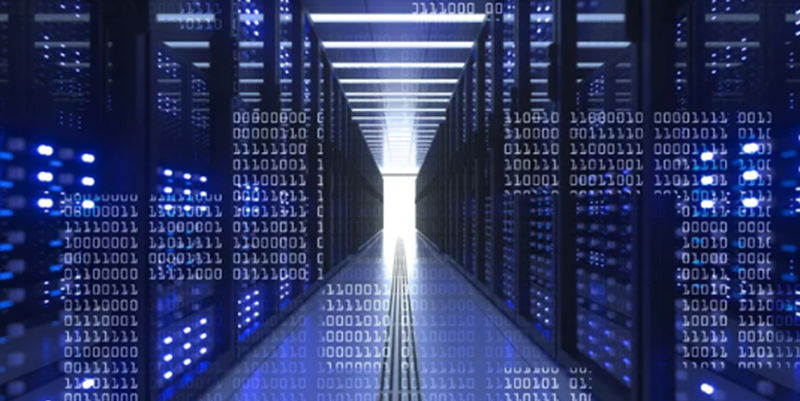As the world rushes to embrace artificial intelligence (AI) and specifically generative AI, the demand for hyperscale data centers is set to skyrocket. Tech giants like Google and Amazon are poised to nearly triple their capacity over the next six years to accommodate the exponential growth in AI-driven applications. This article delves into the forecasted expansion of hyperscale data centers and the cost implications of implementing generative AI without the assistance of hyperscale cloud providers.
The Growth of Artificial Intelligence and Generative AI
Artificial intelligence has rapidly advanced in recent years, and generative AI, in particular, has emerged as a breakthrough technology. Generative AI refers to the ability of machines to autonomously create novel content, such as images, music, and written text. This revolutionary innovation has the potential to reshape various industries, from healthcare to entertainment and beyond.
Increasing demand for hyperscale data centers
As generative AI gains traction, the demand for computing power and storage capacity soars. In response to this influx, hyperscale data centers, which offer unparalleled scalability and flexibility, have become vital infrastructure for supporting AI workloads. These data centers provide the necessary infrastructure to process vast amounts of data quickly, enabling advanced AI algorithms to generate real-time insights.
Forecast of Capacity Expansion in Hyperscale Data Centers
According to the Synergy Research Group, the average capacity of new hyperscale data centers is expected to more than double that of existing operational centers. Over the period between 2023 and 2028, the total capacity of all operational hyperscale data centers is projected to grow nearly threefold. This expansion highlights the urgent need for hyperscale cloud providers to accommodate the increasing demand for generative AI applications.
Impact of Generative AI on Power Consumption in Data Centers
The remarkable advancements in generative AI have come at a cost — a substantial increase in power consumption by data centers. Hyperscale operators have had to reassess their architectural and deployment plans to accommodate the heightened energy requirements. Power-intensive hardware, such as Nvidia GPUs commonly used for generative AI, has contributed to increased power consumption, raising concerns about sustainability and operational expenses.
Cost implications of acquiring and operating AI hardware
Enterprises have recognized the potential of generative AI but are often deterred by the costs associated with acquiring and operating the required hardware. The high price tags attached to GPUs, specialized servers, and storage systems can pose a significant financial obstacle. This has prompted many enterprises to explore alternative options, such as relying on hyperscale cloud providers for their AI needs.
Relying on hyperscale cloud providers for AI needs
Given the expense and limited access to expertise, numerous enterprises opt to outsource their AI requirements to hyperscale cloud providers. These providers offer AI as a service, allowing businesses to rent AI capabilities rather than investing in expensive hardware. Cloud providers like AWS and Microsoft have recognized this demand, positioning themselves as leaders in the AI market by offering comprehensive AI solutions through their vast infrastructure.
The cost of Nvidia GPUs and their power consumption
One of the significant hardware components for generative AI, Nvidia GPUs, is renowned for its high power consumption. While GPUs provide immense computational power necessary for training AI models, budget-conscious enterprises may hesitate to undertake the expense associated with their acquisition and operation. This dynamic further strengthens the case for leveraging the infrastructure and expertise of hyperscale cloud providers.
Farming Out AI Training to Hyperscale Cloud Providers
To mitigate costs and alleviate resource constraints, enterprises have the option to outsource the computationally intensive training phase of AI to hyperscale cloud providers. By leveraging the vast computing resources available in these data centers, businesses can offload the heavy lifting required for training AI models. This approach allows companies to focus on utilizing AI models for their less process-intensive inference tasks.
AI as a Service: Renting AI capabilities from hyperscale cloud providers
Enterprises can now tap into the emerging offering of AI as a service from hyperscale cloud providers. This rental model enables businesses to access AI capabilities and tools on demand without the upfront investment in expensive AI hardware. By utilizing AI as a service, organizations can leverage the expertise and infrastructure of cloud providers, facilitating smoother implementation and reducing financial risks.
Challenges for Enterprises in Implementing Generative AI Without Hyperscale Cloud Providers
While the allure of generative AI is undeniable, implementing it without the help of hyperscale cloud providers presents significant challenges for enterprises. The cost implications of acquiring and operating AI hardware, coupled with the limited availability of AI expertise, may thwart successful adoption. Without the infrastructure and support of these cloud providers, businesses face obstacles that hinder their ability to fully harness the benefits of generative AI.
The rapid advancements in generative AI have fueled an insatiable demand for hyperscale data centers. To accommodate this surge and mitigate the associated costs, enterprises are turning to hyperscale cloud providers that offer AI as a service. With their immense computing resources and expertise, these providers play a crucial role in facilitating the adoption and implementation of generative AI. As the AI landscape continues to evolve, hyperscale data centers will remain at the forefront, driving innovation and enabling transformative AI-driven applications.

